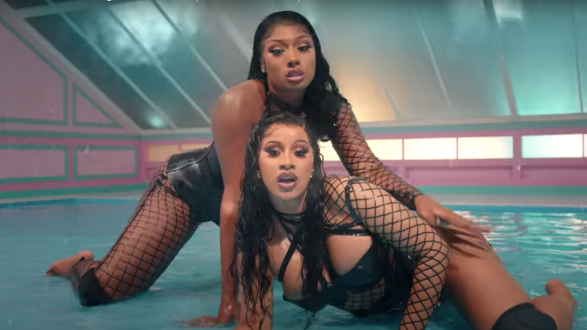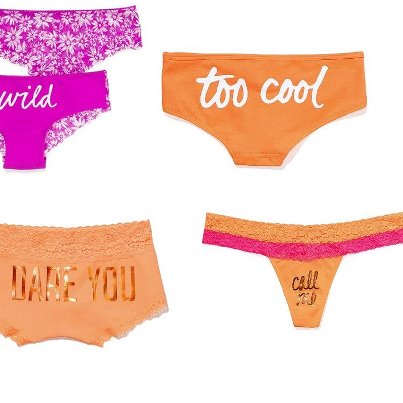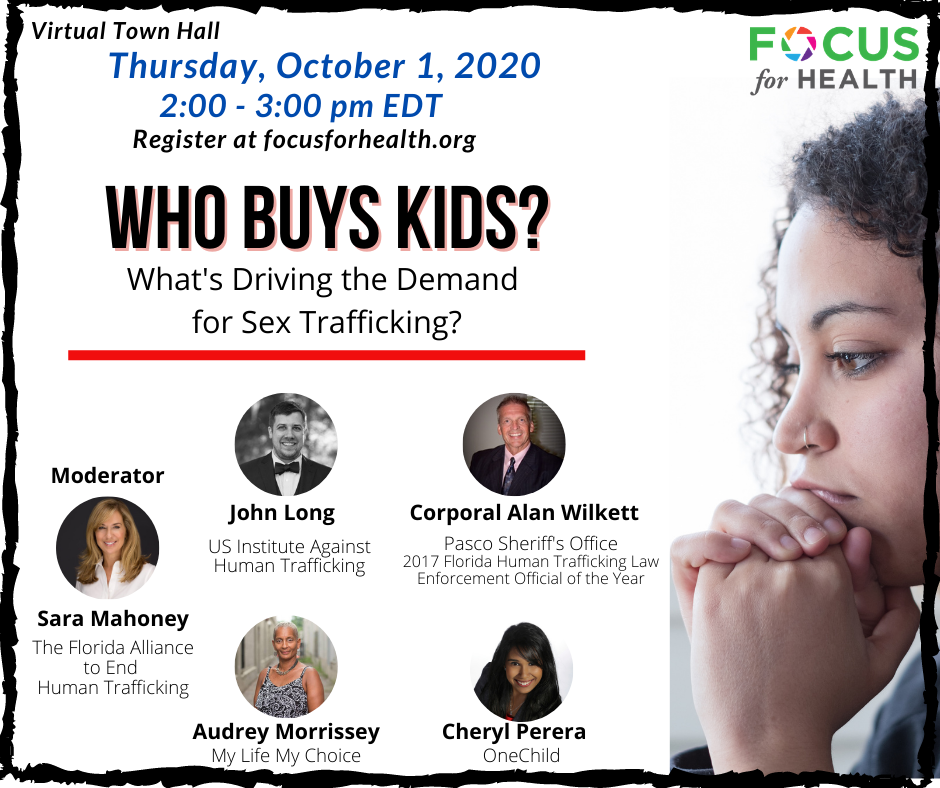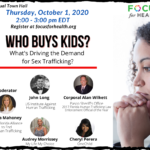 We have a complicated relationship with media and pop culture. While artists are shattering gender norms and empowering disenfranchised populations, more and more sexualized images are projected into the stratosphere, and young eyes are taking notice. The fallout from this phenomenon may be a factor that drives child sex trafficking, rape culture, and objectification of women.
We have a complicated relationship with media and pop culture. While artists are shattering gender norms and empowering disenfranchised populations, more and more sexualized images are projected into the stratosphere, and young eyes are taking notice. The fallout from this phenomenon may be a factor that drives child sex trafficking, rape culture, and objectification of women.
 Cardi B and Megan Thee Stallion’s “WAP” song debuted at No. 1 on the Billboard Hot 100 and has been lauded as a female sex-positive empowerment anthem. Cardi B defends her song with the NSFW acronym (Wet A** P***Y) against critics by stating that, “It’s for adults.” However, log onto the TikTok app and you’ll find girls as young as 11 gyrating to the WAP song, mouthing explicit lyrics they most likely don’t understand. Is it so shocking to believe that predators would seek out these children, “like, comment, or share” their videos, and attempt to engage them in sexual acts they’re not prepared for? Is it a far leap for these predators to use these images as a defense and claim they had consent?
Cardi B and Megan Thee Stallion’s “WAP” song debuted at No. 1 on the Billboard Hot 100 and has been lauded as a female sex-positive empowerment anthem. Cardi B defends her song with the NSFW acronym (Wet A** P***Y) against critics by stating that, “It’s for adults.” However, log onto the TikTok app and you’ll find girls as young as 11 gyrating to the WAP song, mouthing explicit lyrics they most likely don’t understand. Is it so shocking to believe that predators would seek out these children, “like, comment, or share” their videos, and attempt to engage them in sexual acts they’re not prepared for? Is it a far leap for these predators to use these images as a defense and claim they had consent?
Most of us believe that anyone who would have sex with a child is a monster, but studies have found they are usually ordinary men no different than your neighbor, uncle, spouse, or religious leader. U.S. Culture floods adults and children with images that normalize the sexualization of children, desensitize viewers to how damaging and traumatic it is to children, and reinforce stereotypes that under-aged girls are sexual objects who exist for the purpose of meeting male sexual needs.
Need the evidence?
These are popular dolls that children play with:

Try buying a young girl a Halloween costume:

Thong underwear for children (complete with “call me” written across the front):

Fashion advertising that makes girls as sexy and young as possible:

Cheer, dance, and beauty pageants that sexualize children…

And Porn: Barely Legal is a huge franchise of video, magazines and movies. Picture not needed, but advertising slogans assure all potential viewers that the girls are as young as legally possible and selected on their most pre-pubescent attributes.
Sex Trafficking of Minor Children
When it comes to the sex trafficking of minors, there is a huge demand, and America is a primary driver of that market force. Predators are willing to pay large sums of money and travel great distances to rape children. Realizing that they were losing market opportunities from sexual tourism, U.S. traffickers beefed up supply in the U.S.
 Sex traffickers can recruit children who have a history of physical abuse, sexual abuse or neglect easily (they are likely to be involved in the child welfare system) and manipulate and coerce them effortlessly. Teenage children make for a perfect labor force. They are neither savvy enough or resourced enough to get help and they are desperate and afraid enough to stay with their captors. Exploiters key into all these vulnerabilities.
Sex traffickers can recruit children who have a history of physical abuse, sexual abuse or neglect easily (they are likely to be involved in the child welfare system) and manipulate and coerce them effortlessly. Teenage children make for a perfect labor force. They are neither savvy enough or resourced enough to get help and they are desperate and afraid enough to stay with their captors. Exploiters key into all these vulnerabilities.
Traffickers know that if children are dressed as provocative sexual objects, it is easier to assume they are willing participants. Most men who purchase sex from minors do not consider themselves rapists. But the idea of a precocious seducing Lolita is such an archetype burned into our collective culture that it becomes easy for some adults to justify their actions.
These cultural messages help buyers incorrectly and dangerously rationalize that the under-aged girls really “want” them and the fact that they are “experienced” or “skilled” sexually takes buyers off the hook of any responsibility for harming them. In an interview of children recovered after exploitation, some reported that rarely would a sex buyer leave the room when they saw how young the girl was, and even when they left, they never called and reported the trafficked children to authorities. Sex buyers do not want to know anything about the girls or how they got there. As one man (arrested for attempting to purchase sex from a police officer posing as a 15-year-old girl) explains “I don’t want to know how the sausage is made.” Sex buyers think of our children as products; to be used only for their selfish fantasies. This is what demand for sex trafficking looks like in the U.S.
It’s important to note that once an exploited child turns 18, they do not turn into an empowered, consensual adult overnight with all the knowledge to access a better life. Many exploited children become exploited adults, still navigating through circumstances they don’t know how to control.
So How Do We Decrease Demand?
The Real Men Do Not Buy Girls campaign was an effective PR tool to bring awareness to the issue. The faulty assumption is that men, if they know the girls are coerced, would not want to contribute to their exploitation. A research study of men showed that more than half admitted that they either knew or believed that most prostituted women were lured, tricked or trafficked.
Cultural Norm Shift
 When minor girls are socialized in a culture that distills them down to nothing more than a collection of their physical attributes, they start to see themselves as objects, and this can be psychologically damaging. Girls who value physical attractiveness or sexual worthiness above intelligence and personal well-being are already primed for victimization. Frequently, the media sends the message that girls should be pretty, not smart; compliant, not powerful; objectified, not respected. Obviously, this is damaging to girls and women, but the role it plays in shaping our society is having some huge and negative consequences.
When minor girls are socialized in a culture that distills them down to nothing more than a collection of their physical attributes, they start to see themselves as objects, and this can be psychologically damaging. Girls who value physical attractiveness or sexual worthiness above intelligence and personal well-being are already primed for victimization. Frequently, the media sends the message that girls should be pretty, not smart; compliant, not powerful; objectified, not respected. Obviously, this is damaging to girls and women, but the role it plays in shaping our society is having some huge and negative consequences.
Educating boys about gender equality and toxic masculinity is needed to change the narrative regarding gender-based violence. Boys and Men need to reframe sex trafficking and gender-based violence as not just a women’s issue, but a human rights issue.
Social Media platforms can help by developing safeguards against explicitly sexual images on accounts of minors. Responsibility also lies with parents and caregivers in ensuring their children’s content are above bar. This way, we can enjoy our Cardi B and protect our children, too.
If the status quo in all U.S. media marketing is to keep children portrayed as children, and not sexual objects, it will be clearer for all to understand where the line is between entertainment and dangerous objectification.
Reframing the Problem
Law enforcement and media must consistently recognize that children are not prostituting; they are being “prostituted.” Reframing the language about those who are trafficked is needed so that the ones being prostituted are portrayed as victims and the real enemy is those driving and feeding the demand.
Reverse Sting Operations
 Survey data indicates that about 25% of men who buy sex “strongly agree” that they would stop engaging in this behavior if the risk of arrest were “high.” Men report that if they were charged with a crime and that their community could find out they purchased prostitutes they would stop. Fear of exposure is a strong deterrent. Policing all too often focuses on arresting the people who are trafficked, not those soliciting or purchasing the trafficked individual. Simply shift law enforcement’s resources away from arresting and adjudicating trafficked individuals and focus on arresting and adjudicating buyers would curb demand.
Survey data indicates that about 25% of men who buy sex “strongly agree” that they would stop engaging in this behavior if the risk of arrest were “high.” Men report that if they were charged with a crime and that their community could find out they purchased prostitutes they would stop. Fear of exposure is a strong deterrent. Policing all too often focuses on arresting the people who are trafficked, not those soliciting or purchasing the trafficked individual. Simply shift law enforcement’s resources away from arresting and adjudicating trafficked individuals and focus on arresting and adjudicating buyers would curb demand.
Furthermore, the implementation of mandatory fines levied against convicted buyers to cover the cost of police enforcement and survivor exit services could disincentivize would-be purchasers. Publicly labeling adults who solicit children for sex as sex offenders under Megan’s law is a critical deterrent.
Address Poverty and Inequality
Racism is deeply embedded in human trafficking. Solutions must acknowledge the intersectionality of immigration, poverty, racism, gender, and racial discrimination. According to a Bureau of Justice Statistics Report 77% of those involved in trafficking incidents were people of color. Inequality is a ripe breeding ground for exploitation, including human trafficking.
Take Gender-Based Violence Seriously
Another common phenomenon that feeds the trafficking business is gender-based violence. This specific type of aggression is almost always perpetrated by men against women and girls (though they are not the only victims) and is used as a fear and manipulation tactic to control another person. Education around prevention of violence and addressing gender-based violence in law enforcement, schools, and other organizations is one tool to use in ending the trafficking trade.
Education and advocacy coupled with strong legislation and consequences work in tandem to deter the demand for exploited children. Public Protection of ALL children will ultimately drive down the demand for sex trafficking.
Want to know what YOU can do to protect our children from sex trafficking? Check out our virtual town hall when we spoke with experts in the field about what we can all do to decrease the demand on exploited children! Click Here to Learn More!






Join the Conversation